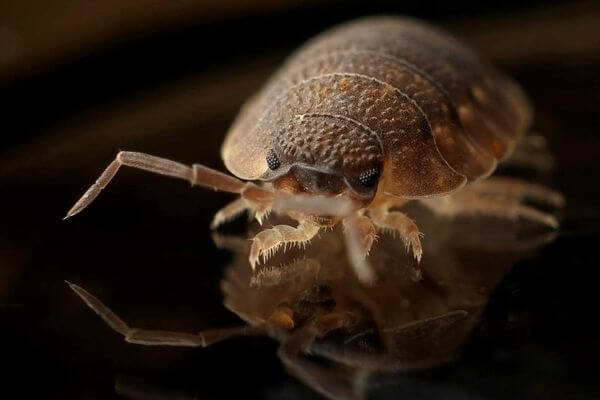America was winning the war on bed bugs. Then in the 1990s, more Americans went abroad and brought bed bugs back with them. All 50 states now deal with bed bug infestations.
This is just one of many important facts about bed bugs. When you have an infestation on your hands, learning about bed bug facts may not seem important. But getting the truth about bed bugs can help you find the comprehensive bed bug treatment you need.
How and when do bed bugs feed? Where do bed bugs live? How can bed bugs avoid you, and what should you do to get rid of them?
Answer these questions and you can clear bed bugs out of your home or business. Here are ten facts you should know.
1. Bed Bugs Can Drink a Lot of Blood
Bed bugs are small. Most have bodies less than one-quarter of an inch long, which is roughly the length of an apple seed.
But they can feed for several minutes straight without stopping. These pests can consume up to six times their weight in blood in a single feeding.
This amount of blood loss is not enough to harm a human, but any opening on the skin can cause an infection, and bed bugs can spread pathogens like MRSA.
2. Facts About Bed Bugs Apply to All Climates
Bed bugs have hard shells that insulate their bodies from extreme temperatures. Pest control companies have found them in homes in nearly every climate, including very cold and hot ones. They can survive near-freezing temperatures as well as rooms as hot as 120 degrees.
3. Bed Bugs Know How to Stay Out of Sight
Bed bugs have very strong instincts. They know that humans are active during the daytime, so they hide in places where they cannot be seen.
These bugs can also detect when someone enters a room based on their body temperature and the carbon dioxide they emit when they exhale. Bed bugs usually wait until a person has fallen asleep to feed.
4. The Bed Bug Lifespan Is Long
The majority of bed bugs live up to six months, and some can live up to a year if they are eating well. This is more than enough time for a female bug to lay hundreds of eggs and feed dozens of times. Allowing bugs to remain in your home for even a few weeks can result in a lengthy infestation.
5. Bed Bugs Can Hide Anywhere
Most people think bed bugs hide in bed frames and mattresses. It is true that you can find bugs in your mattresses because they are warm and soft places for nests.
But in reality, there are many unexpected places for bugs to hide. Bugs can hide inside electrical appliances, enjoying the warmth that electricity creates. They can also lay nests inside books, especially ones that have not been moved in months or years.
6. There Are 90 Species of Bed Bugs
Bed bugs are always evolving, leading to the creation of new species. Cimex lectularius is the most common species of bed bugs in the United States. These bugs have round and red bodies, and they can cause skin infections and rashes.
Cimex hemipterus is the most common species in tropical climates. The middle part of their body appears slightly sunken, and they have eyes shaped like raspberries. However, Cimex hemipterus bugs behave near identically to Cimex lectularius bed bugs.
7. Bites Are Subtle
When a bed bug bites someone, it excretes a small amount of anesthetic. This means that you will not feel the bite while it is happening.
The anesthetic fades after a few minutes, but the bite is so small that you may not notice it for days or weeks. You may mistake the bite for a scrape, or you may think that a mosquito or another insect bit you.
You can tell bed bug bites apart from other bites based on their appearance. Bed bug bites tend to be red with a dark spot in the middle.
If you have a bite, you probably have an infestation in your home. You should take immediate action to kill as many bugs as possible.
8. Mattress Protectors Don’t Help
Some mattress companies sell bed bug treatment protectors that they state will stop or control an infestation in progress.
Unfortunately, these protectors rarely work, if ever. Bed bugs are so small that they can enter the mattress through the gap in between the mattress and the bed frame.
9. Bed Bugs Are Fast Pests
Some people try to take care of bed bugs on their own. They shine bright lights underneath their furniture so they can spot bugs and then spray them with pesticides.
Yet bed bugs can crawl up to four feet in one minute. By the time you spray a shelf or bed frame with pesticide, the bug has moved from this spot.
10. Bed Bugs Can Resist Pesticides
Even if you can catch bed bugs, you may not be able to kill them. Bed bugs have developed an immunity to most pesticides, including fumigators.
Pest control companies do have other methods to kill bugs. They can use high-powered vacuums to suck bugs away. They can also funnel steam inside the walls, which can suffocate or cause bed bugs to leave a home.
You Must Understand Bed Bug Facts
Bed bug facts aren’t little factoids. Bed bugs can drink several times their weight in blood, and they can stay out of sight.
A female bed bug can live long enough to give birth to hundreds of babies. These babies can hide underneath any piece of furniture or inside electronics.
You may not notice bites or bugs until your home is infested. It’s hard to chase bugs down or kill them with pesticides or prevent them with mattress protectors.
But you can use facts about bed bugs to your advantage. Cryonite provides premium tools for pest control. Browse our shop today.

